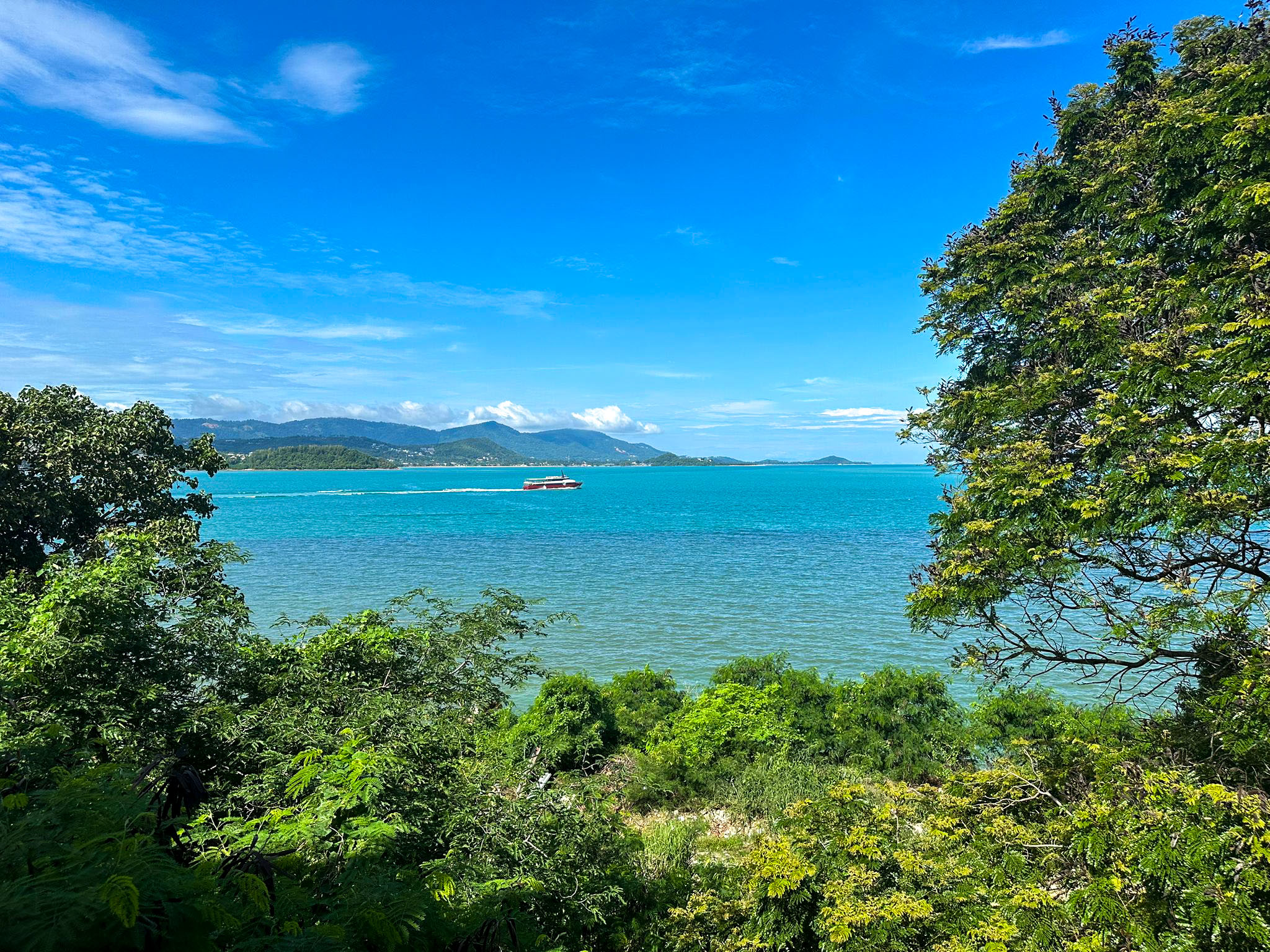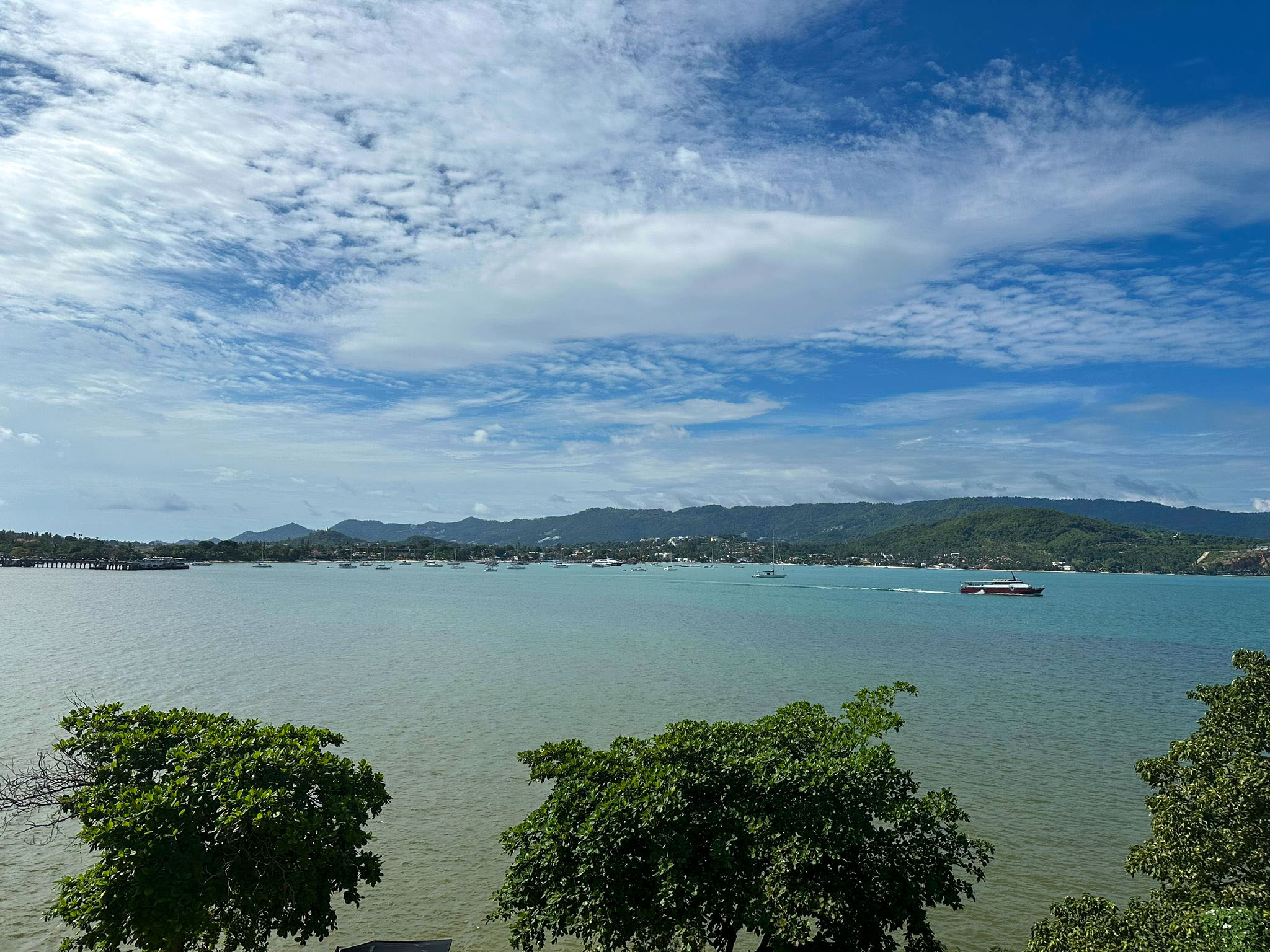There’s a moment on Koh Samui when the sea and the sky blur into one unbroken sweep of turquoise and cerulean, and it feels like the island has decided to pause just for you. From the hilltop lookout, the lush green canopy frames the horizon perfectly, a bright red ferry cutting across the calm waters like a moving dash of paint on a blue canvas. The Gulf of Thailand glimmers below, stretching endlessly toward the hazy silhouettes of nearby islands, each one wrapped in its own veil of mist. The air carries that distinct tropical blend of salt and greenery, sharp and sweet all at once, and the light has that magical clarity that makes every color seem slightly more honest than anywhere else.


Further along the bay, the view widens—boats bob near the piers, and the mountains of the mainland sit quietly in the background, their deep green contours rolling softly under the drifting clouds. Even the movement of the water seems unhurried here, rhythmically folding and unfolding like breath. There’s something oddly cinematic about it—the kind of calm that looks spontaneous but feels choreographed by nature’s patient hand. The ferries passing through look like symbols of quiet connection between these small, scattered worlds of the Thai archipelago.
And then, a shift in tone—the golden shimmer of Wat Phra Yai, better known as the Big Buddha Temple. Rising at the top of a long staircase guarded by serpentine nagas, the immense statue commands the horizon with serene authority. Its gold surface burns bright under the tropical sun, the halo behind its head shaped like an ancient wheel of dharma, glinting with an almost supernatural radiance. Climbing those sun-warmed steps feels both physical and symbolic; the higher you go, the quieter everything becomes. By the time you reach the top, you hear only the wind, the echo of bells, and the far-off hum of the sea below. It’s hard not to feel small, yet strangely grounded.

Koh Samui has that duality that lingers with you long after you leave—the raw natural beauty of its coastlines and the spiritual gravity of its temples. It’s a place that invites both wandering and stillness. Maybe that’s why it remains one of those rare corners of the world that feel unchanged in essence, even as everything else moves faster. Here, time slows not because it must, but because it wants to.
Leave a Reply